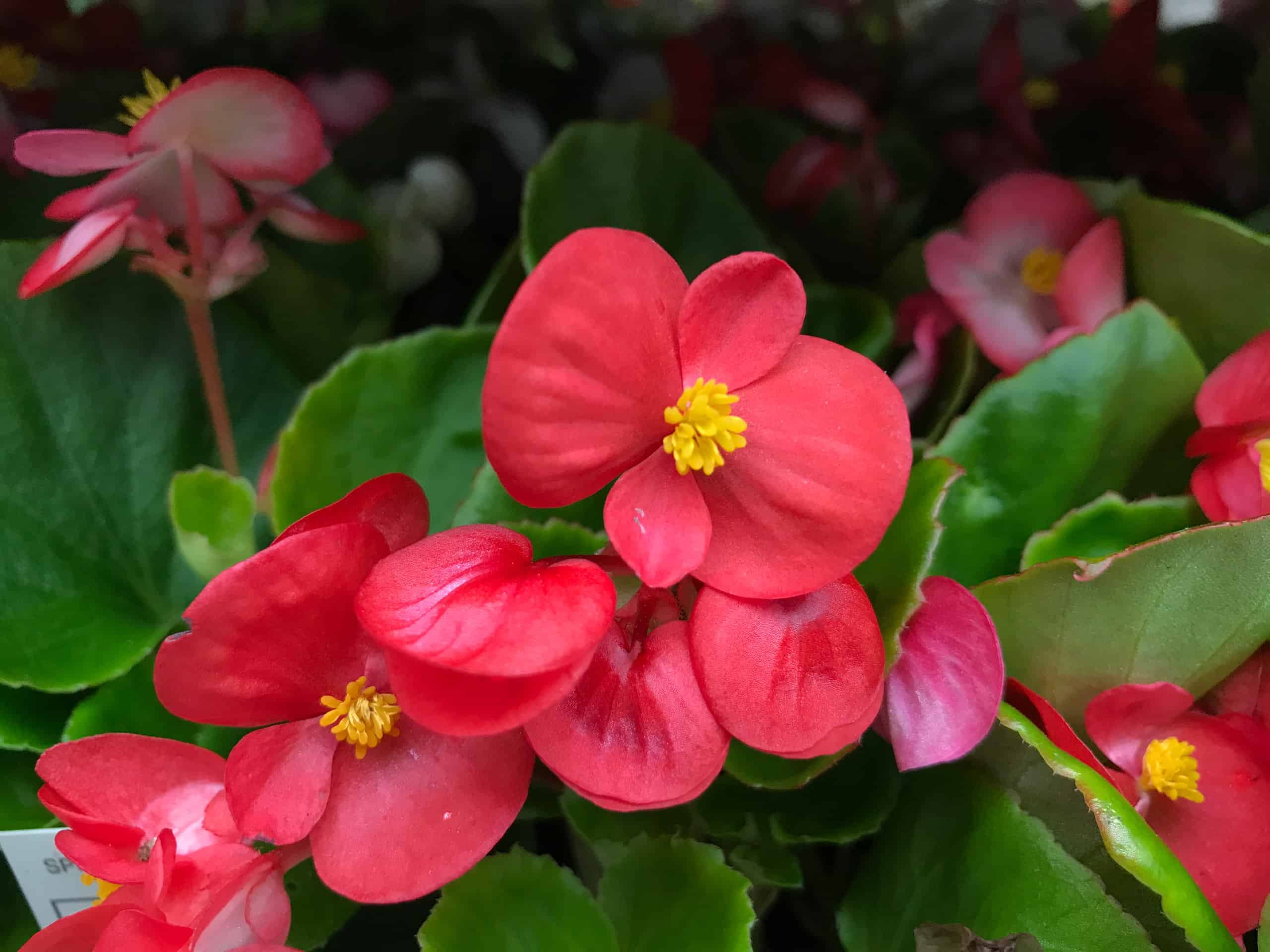Making for some of the easiest, most beautiful, and therefore most popular potted plants, begonia bulbs are big winners for gardeners. Many varieties thrive as outdoor perennials in warm enough, moist enough climates, as hanging plants with trailing foliage and blooms, or as standard container garden plants. Often found among patio pots and window sill boxes, begonias add brightness and unique aesthetics wherever they’re grown.
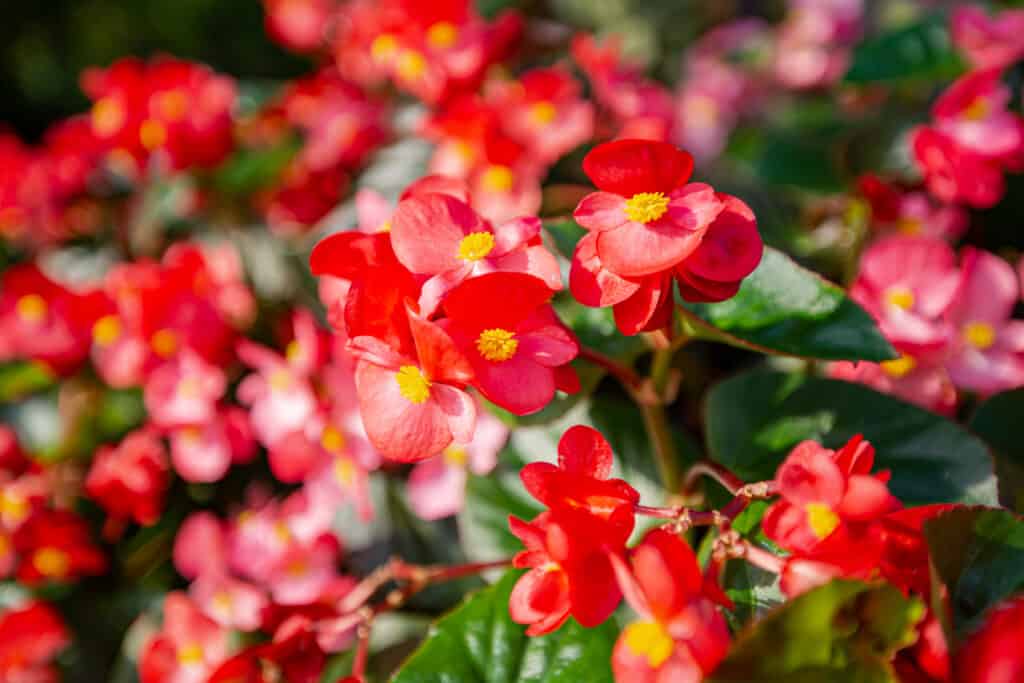
Red begonia is blooming in the field
©iStock.com/deaw59
| Botanical name | Begonia |
| Popular varieties | Nonstop Orange, Nonstop White, Nonstop Deep Rose, Solenia Dusty Rose, On Top Sunset, ‘Doublet Rose’, ‘Dragon Wing Red’, ‘Mandalay Pearl’, ‘Doublet White’, ‘Cocktail Whiskey’, ‘Sprint Scarlet’, On Top Fandango, Prima Donna Sunburst, Nonstop Yellow, Pin Up Flame, Cascade Florence, Picotee White-Pink Solenia Salmon Coral, Nonstop Fire, ‘Super Olympia Coral’, ‘Whopper’, Olympia Red, Cocktail Rum, Double Up White, Amstel Clara, Amstel Batik, Amstel Blitz, Amstel Veronica, Elatior Borias, Elatior Valentino Pink, Angelique, Dragon Wing Red, Summerwings Dark Elegance, Santa Cruz Sunset, Funky Red, Sun Dancer Apricot, Waterfall Encanto Red, Olympia Pink, Victory Rose, Ambassador White, Fiona Red, Bada Boom Pink, Whopper Rose with Bronze Leaf, Nonstop Red |
| Light needs | Partial shade for most varieties; full sun for wax begonias |
| Water needs | Regular watering without becoming waterlogged |
| Soil needs | Moist, well-draining and never soggy soil, amended with compost or sand, as needed |
| USDA Hardiness Zones | 2 to 10, depending on the variety |
| Beginner friendly? | Yes |
| Special care notes | The key to success for begonias is knowing the specific light needs of the variety you’ve chosen. |
What Are Begonia Bulbs?

Most begonia transplants should be spaced 6 to 8 inches apart, but you should consider the plant’s mature size to plant it accordingly.
©Andrea Izzotti/Shutterstock.com
The name of the flower? Begonia. The genus? Begonia. The beautiful and unique plants are perennials or annuals, depending on the zone in which they’re grown, with about 2000 species available. They belong to the Begoniaceae family and are native to subtropical and tropical climates with high moisture and humidity. Cooler environments may welcome the flowers as potted plants or annuals only.
Types of Begonia Bulbs
Begonia bulbs come in a wide variety of types and needs, based on the type of bulb.
Tuberous Begonias
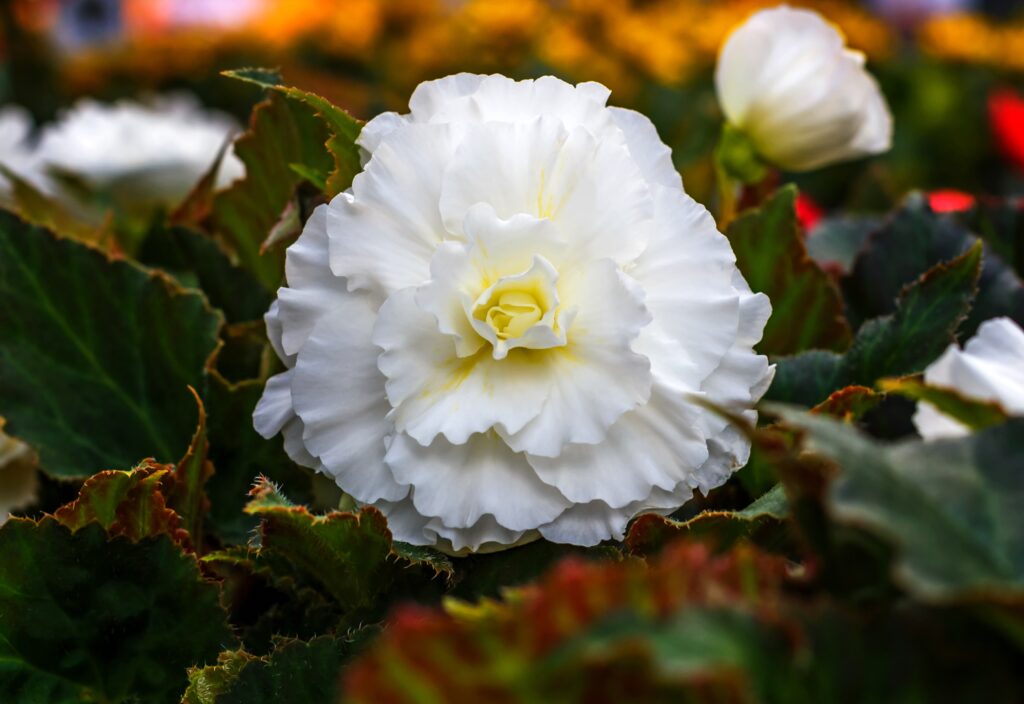
Double begonias are relatively easy to care for and can be grown indoors and outdoors, depending on the climate.
©Nnattalli/Shutterstock.com
The most popular of all begonias are the tuberous varieties. These show off their beauty with large, colorful blooms and thrive both indoors and outdoors, depending on your climate.
Rhizomatous Begonias
Growing from rhizomes, rhizomatous begonias additionally are popular among flower gardeners, thanks to their unique foliage forms and color patterns and the delicate blooms they produce in vivid colors.
Fibrous Begonias
The third most common sort of begonia you’ll find in nurseries is the fibrous begonia. These are more often used in outdoor garden beds and as houseplants, producing delicate flowers. This type includes the ever-popular wax begonia.
Varieties or Types of Begonia Bulbs

Wax begonias are probably the most commonly found type of begonias.
©Halit Omer/Shutterstock.com
Literally thousands of varieties of begonia bulbs flourish around the world. Some of the most popular choices have fun, funky names like Bada Boom Pink or Dragon Wing Red. Additionally, you’ll find the following are fairly easy to acquire for growing at home, many of which whose names indicate their coloration.
- Nonstop Orange
- Nonstop White
- Nonstop Deep Rose
- Solenia Dusty Rose
- On Top Sunset
- Doublet Rose
- Dragon Wing Red
- Mandalay Pearl
- Doublet White
- Cocktail Whiskey
- Sprint Scarlet
- On Top Fandango
- Prima Donna Sunburst
- Nonstop Yellow
- Pin Up Flame
- Cascade Florence
- Picotee White-Pink
- Solenia Salmon Coral
- Nonstop Fire
- Super Olympia Coral
- Whopper
- Olympia Red
- Cocktail Rum
- Double Up White
- Amstel Clara
- Amstel Batik
- Amstel Blitz
- Amstel Veronica
- Elatior Borias
- Elatior Valentino Pink
- Angelique
- Summerwings Dark Elegance
- Santa Cruz Sunset
- Funky Red
- Sun Dancer Apricot
- Waterfall Encanto Red
- Olympia Pink
- Victory Rose
- Ambassador White
- Fiona Red
- Bada Boom Pink
- Whopper Rose with Bronze Leaf
- Nonstop Red
How to Care For Begonia Bulbs
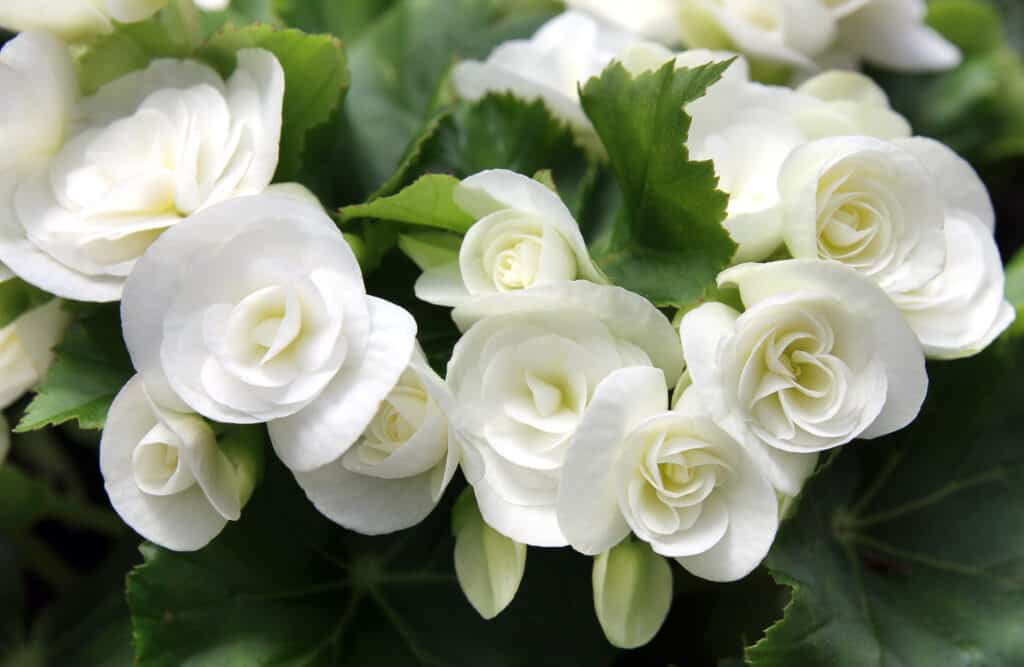
Begonias come in many varieties, colors, and forms.
©Opachevsky Irina/Shutterstock.com
Generally considered easy to care for, there are a few requirements that will help your begonias thrive with little attention.
Light Requirements
Partial shade is the friend of most begonia varieties, especially cane and tuberous begonias. Wax begonias, however, love full sun, particularly if they’re a variety with bronze foliage.
Water
The key on watering for begonias is keeping the soil moist during growing and flowering seasons, but never soggy. You can let begonias dry out a hint, if need be, between waterings, though we’d recommend using a moisture meter to keep your watering schedule on point. Aim to water in the morning, at the base of the plant, and specifically avoid the hottest time of day as this could lead to leaf scorch.
Soil Conditions
Begonias, like most bulb flowers, are prone to root rot, so proper water balance is important in their soil. The soil particularly needs to be well-draining and light – or with compost or sand added if heavy (poorly draining).
Fertilizer
A regular dose of fertilizer will serve your begonias well. Using diluted liquid, balanced fertilizer, add to the soil when you first plant the bulbs. For an abundance of flowers, go for a heavier phosphorous than nitrogen dose monthly before blooming begins. Switch to the balanced fertilizer for foliage production.
Working with tuberous begonias, you’ll want to use a diluted high-nitrogen formula bimonthly as soon as flowering begins, through the end of the season. Then, move back to a low nitrogen or balanced formula for the rest of the growing season. Stop fertilizing at the end of summer.
How to Propagate
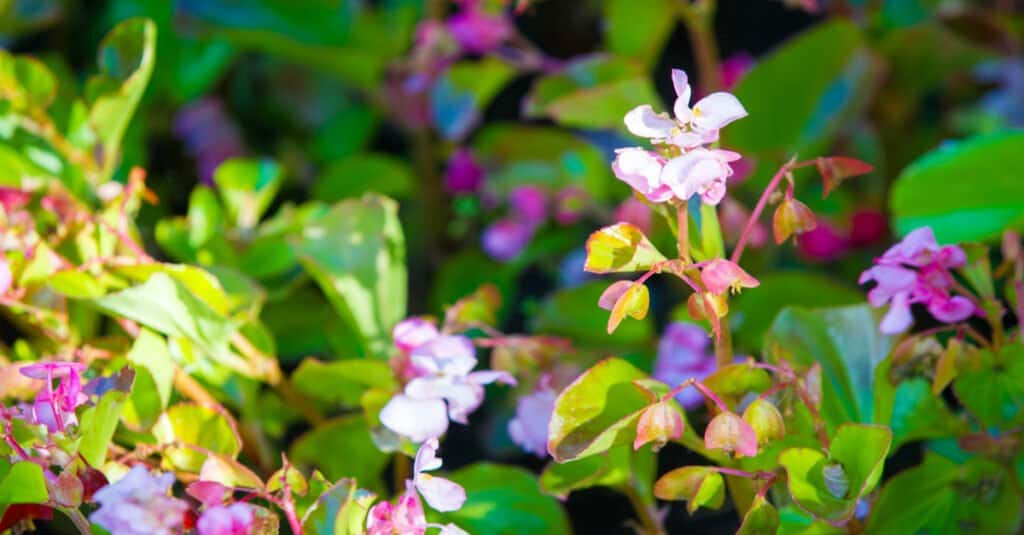
Begonias are native to a humid subtropical and tropical climate. Some species are usually grown indoors as indoor plants.
©Fedotova Olga/Shutterstock.com
One nice thing about begonia bulbs is that they require the same propagation method, whatever the variety. Propagate them by digging up the bulbs after the season has passed and gently, with a sharp knife or spade, divide the bulbs. Replant the bulbs in healthy soil and water immediately.
Thank you for reading! Have some feedback for us? Contact the AZ Animals editorial team.

